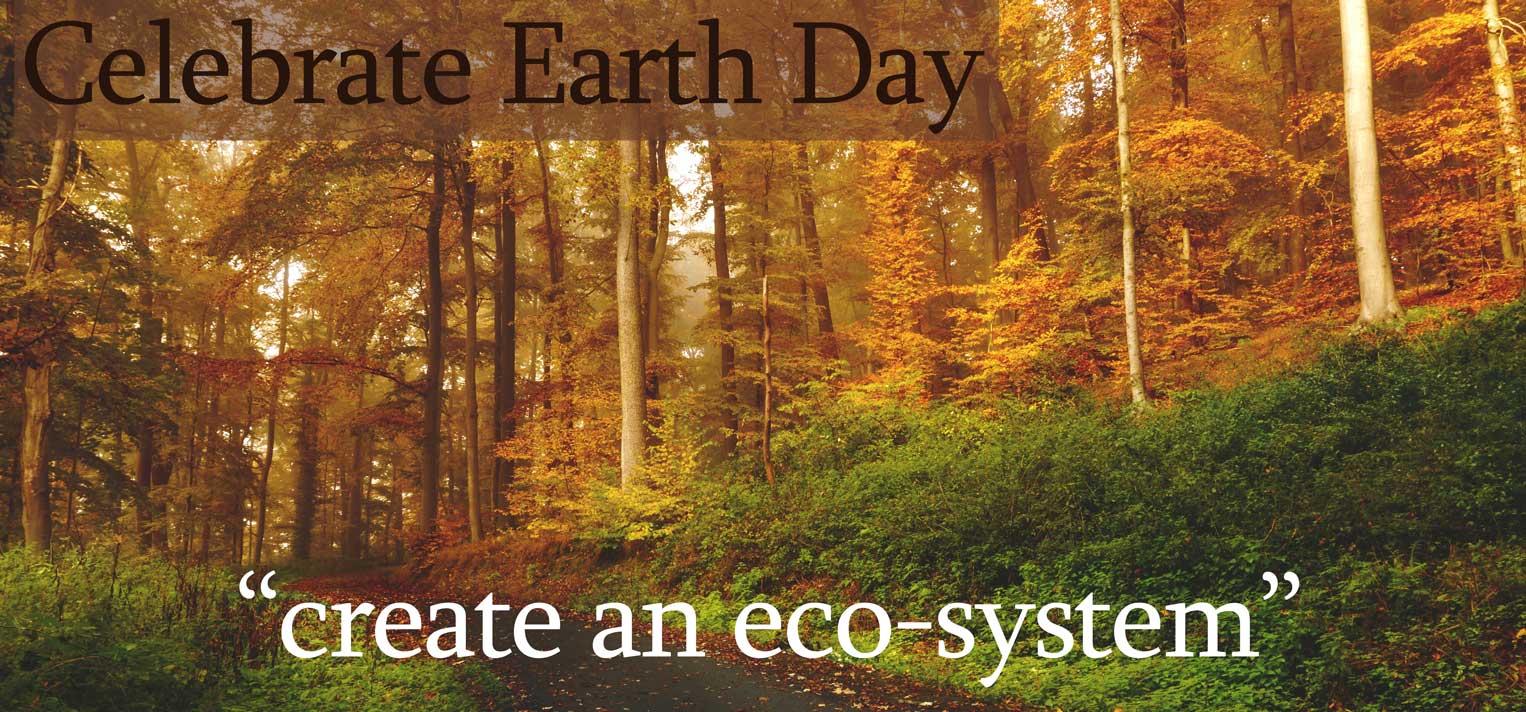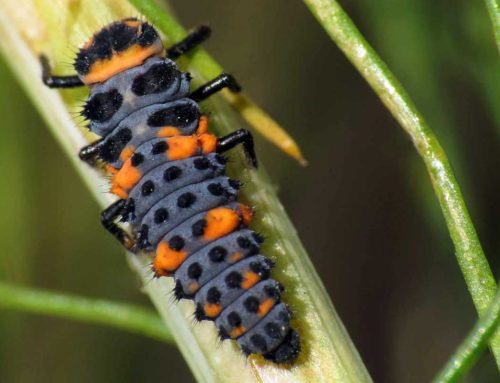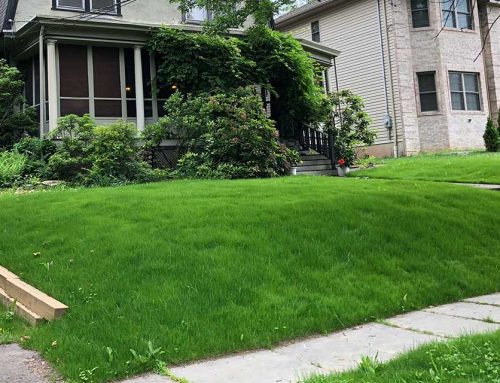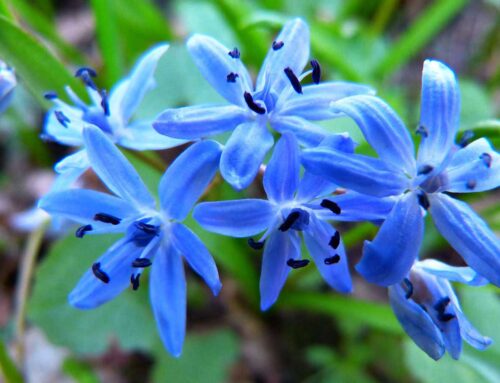It’s All About Sustainability
Lincoln Landscaping • Where Every Day Is Earth Day
Lincoln Landscaping • Where Every Day Is Earth Day
“The ultimate test of man’s conscience may be his willingness to sacrifice something today for future generations whose words of thanks will not be heard.”
Feed the Soil • Plant A Tree • Utilize Native Plants
Started in 1970, this designated day of April 22 has become an annual reminder of our responsibility to be good stewards of the Earth. You can contribute to a healthier Earth in multiple ways: utilize native plants in a garden, plant a tree, purchase biodegradable products and avoid pesticides of any kind, practice organic and sustainable principles at home, and commit to reduce, reuse and recycle.
 Celebrating Earth Day this year, with many of us still staying home because of the health crisis, is an excellent opportunity to teach today’s children and youth about our planet, it’s eco-system, and how to protect it. Ignite a spark and raise awareness by sharing the many ways we can help preserve our environment, whether at home or with the community. By providing them with incentives and encouraging them to make a difference and respect the world we all share, we can help them to build a better future for all mankind.
Celebrating Earth Day this year, with many of us still staying home because of the health crisis, is an excellent opportunity to teach today’s children and youth about our planet, it’s eco-system, and how to protect it. Ignite a spark and raise awareness by sharing the many ways we can help preserve our environment, whether at home or with the community. By providing them with incentives and encouraging them to make a difference and respect the world we all share, we can help them to build a better future for all mankind.
To this day Earth Day remains one of the largest single day protest events in history. Fifty one years after it all began, climate change is a bigger issue than it ever was with more and more people worldwide demanding sustainable changes be implemented. It is still as it was when it began, a cry for the adoption of environmentally friendly practices to preserve our planet, the Earth.
We only have one earth, so we need to take care of her. That’s what Senator Gaylord Nelson of Wisconsin believed. He was disturbed that an issue as important as our environment was not addressed in politics or by the media, so he created the first Earth Day, on April 22, 1970. An estimated 20 million people nationwide attended festivities that day. It was a truly astonishing grassroots explosion, leading eventually to national legislation such as the Clean Air Act and the Clean Water Act.
Wise Earth Day Choices
Celebrate Our Planet’s Pollinators for Earth Day
Why not celebrate the pollinators of the planet—most importantly bees, and also some birds who play a role in fertilizing plants by transferring pollen from one flower to another. Bees and other pollinators are dying at an alarming rate from toxic pesticides called neonics. We depend upon bees for all our food, and our communities will suffer from food scarcity if we do not save the bees. Planting a pollinator garden is an education and fun home project for the family. One such example is this native perennial pollinator garden we completed in Hillsdale, New Jersey.
 Honoring our commitment to exclusively using natives if at all possible; every plant we utilized within this planting is native plant species. We planted some masses of Echinacea and other perennials that flower during the summer season while the pool is open and being utilized and complimented them with some tall grasses.
Honoring our commitment to exclusively using natives if at all possible; every plant we utilized within this planting is native plant species. We planted some masses of Echinacea and other perennials that flower during the summer season while the pool is open and being utilized and complimented them with some tall grasses.
With native plantings, one needs three types of plants for the pollinators. The first are perennials that flower and provide flowers and nectar for the bees, butterflies and birds for nourishment. Monarda, Echinecea, Black Eyed Susans (rudbeckia), Mountain Mint were used for these plantings. A lot of Milkweed was also incorporated into the design. Milkweed in addition to the pollen it contributes; is also a wonderful host plant for the butterfly larvae to grow on. These host plants are vital.
Finally we added grasses into the planting. Little and Big Bluestem (Andropogon gerardii) along with other native grasses are needed so the pollinators can reproduce, find cover and grow until the beautiful butterfly larvae pupate into your beautiful Monarch butterflies. None of that can happen unless we begin to use more and more native plants in our designs.
Plant A Native Tree For Earth Day
Native trees have a symbiotic relationship with both natural and human communities. Restoring native plant habitat is vital to preserving biodiversity. By creating a native plant garden, each patch of habitat becomes part of a collective effort to nurture and sustain the living landscape for birds and other animals. Ecologically, trees perform many functions that help people and animals. Trees absorb airborne pollutants such as carbon dioxide, ozone, carbon monoxide and sulfur dioxide. Trees also trap airborne dust particles. One large tree can produce enough oxygen to support up to four people. Trees reduce erosion by slowing rainfall and holding water within their systems, they then release moisture into the air. Trees cool the air by intercepting and diffusing the suns rays.
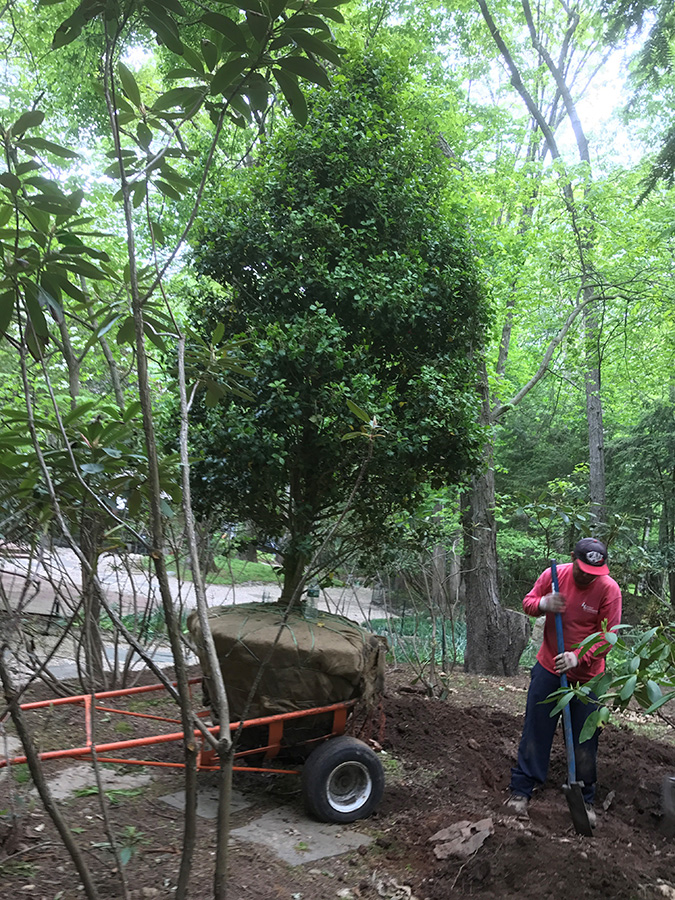 Ilex opaca, commonly called American holly, is an upright, pyramidal, evergreen tree that slowly matures to 15-30′ in cultivation, but may reach 50′ tall in the wild. It is native to the eastern and central U.S. The flowers are greenish white, small, borne in late spring in short pedunculate cymes from the axils of young leaves or scattered along the base of young branches.
Ilex opaca, commonly called American holly, is an upright, pyramidal, evergreen tree that slowly matures to 15-30′ in cultivation, but may reach 50′ tall in the wild. It is native to the eastern and central U.S. The flowers are greenish white, small, borne in late spring in short pedunculate cymes from the axils of young leaves or scattered along the base of young branches.
The flowers are pollinated by insects, including bees, wasps, ants, and night-flying moths. The berries are reputedly poisonous to humans, but are important survival food for birds, who will eat the berries after other food sources are exhausted. The tree also forms a thick canopy which offers protection for birds from predators and storms. Songbirds including thrushes, mockingbirds, catbirds, bluebirds and thrashers frequently feed on the berries.
Planting native species of trees and shrubs helps to re-establish the original eco-system of the region. Native species crate natural corridors or islands in the urban landscape for migrating wildlife. Many species of wildlife do not recognize non-native species and cannot use them for food or shelter.
Go Organic • Say NO to Pesticides
You can grow plants and vegetable gardens without buying bags of fertilizer with pesticides. Growing plants organically is a process, not a bunch of products. The earth has been doing this since the beginning of time. With the proper organic biology, we can eliminate the need for fertilizers and chemicals and pesticides. Compost tea, worms, fungi, and bacteria all feed our plants and grass the nutrients necessary to thrive and sustain themselves. Pesticides kill the natural cycle of life, prohibiting the biology found in the earths soil.
 This is an excellent opportunity to teach children and youth about Conservation Biological Control. What is that you may ask? With the advent of chemical pesticides, the contributions of beneficial insects (those that prey upon or parasitize garden pests) were largely forgotten. However, pesticides alone have not solved the problem of pests—and of course, pesticides have been shown to have widespread, harmful impacts.
This is an excellent opportunity to teach children and youth about Conservation Biological Control. What is that you may ask? With the advent of chemical pesticides, the contributions of beneficial insects (those that prey upon or parasitize garden pests) were largely forgotten. However, pesticides alone have not solved the problem of pests—and of course, pesticides have been shown to have widespread, harmful impacts.
Conservation biological control (CBC) seeks to integrate beneficial insects back into ecological systems for natural pest control. This strategy is based upon ongoing research that now demonstrates a link between the conservation of natural habitat and reduced pest problems within the lawn and garden. Biological control is an ideal alternative to the use of chemicals and pesticides when implementing a pest management strategy, but its impact and level of use globally remain modest and inconsistent. It is defined as the reduction of pest populations by natural enemies and typically involves an active human role.
Lincoln Landscaping Inc of Franklin Lakes
“creating eco-systems”
Lincoln Landscaping “The Natural Choice”
Mike Kolenut President & CEO
https://lincolnlandscapinginc.com
(201) 848-9699

